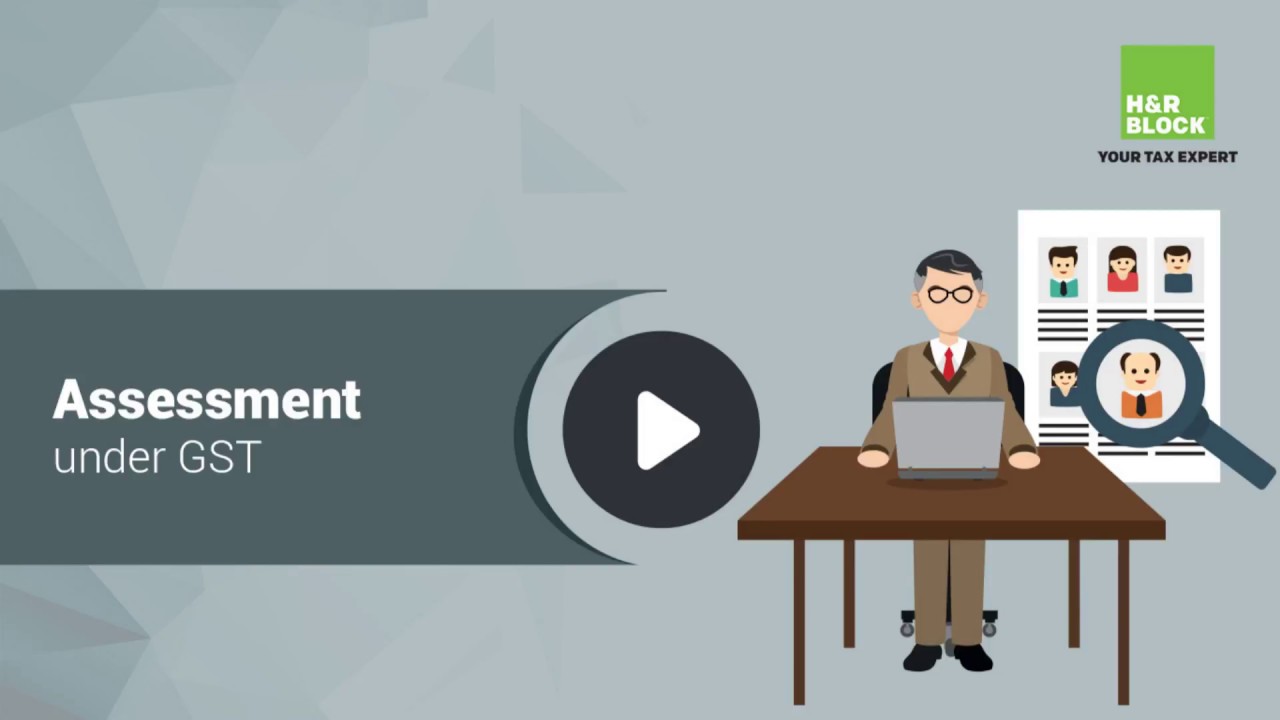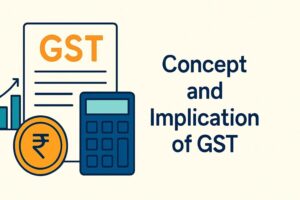An Overview: Best Judgement Assessment in GST in India
- 19 Aug 24
- 18 mins

An Overview: Best Judgement Assessment in GST in India
Key Takeaways
- GST assessments ensure taxpayers comply with tax laws and accurately report their tax liabilities.
- Discrepancies during assessments can lead to further audits, additional tax demands, and penalties.
- Provisional assessments allow for tax payment flexibility when exact tax rates or values are uncertain.
- Taxpayers have the right to appeal against assessment orders within a specific timeframe if they disagree with the outcomes.
- Assessments can result in refunds if it is determined that the taxpayer has overpaid their tax liabilities.
Assessment under the Goods and Services Tax (GST) refers to the process by which the tax authorities determine the tax liability of a taxpayer. This involves examining the correctness of returns and payments made by the taxpayer and ensuring compliance with GST laws. Below is an overview of various aspects and provisions related to assessment under GST

Types of Assessments
GST assessment types include
- Provisional Assessment: Allows taxpayers to pay tax on a provisional basis when they cannot accurately estimate their tax liability.
- Scrutiny Assessment: This involves the verification of GST returns filed by taxpayers to ensure accuracy and compliance.
- Best Judgment Assessment: Applies to non-filers or unresponsive taxpayers, where the tax officer assesses tax liability based on available information.
Provisional Assessment
Provisional Assessment is a crucial feature under the Goods and Services Tax (GST) framework that allows taxpayers to pay tax on a provisional basis. This is particularly useful when there is ambiguity or uncertainty about the tax liability.
Purpose of Provisional Assessment
The primary purpose of provisional assessment is to facilitate business operations when the taxpayer is unable to precisely determine the tax rate applicable or the value of goods and services. This uncertainty could be due to interpretational issues, pending litigation, or any other reason making the accurate calculation of tax difficult.
Procedure for Provisional Assessment
- Application by Taxpayer
The taxpayer who cannot ascertain the tax liability accurately must submit a written request to the GST officer for provisional assessment. The request must clearly state the reasons for the uncertainty.
- Execution of Bond
Along with the application, the taxpayer may be required to execute a bond with a security or surety, guaranteeing the payment of the difference between the provisionally assessed tax and the final tax liability.
- Issuance of Order
The GST officer reviews the application and, if satisfied, issues an order allowing the taxpayer to pay tax on a provisional basis. The order specifies the rate or value at which the tax should be provisionally paid.
- Adjustment of Tax
Once the actual tax liability is ascertained, typically after the necessary information becomes available or the issue causing uncertainty is resolved, the final tax liability is determined.
The taxpayer then needs to adjust the tax already paid provisionally against the final tax liability. If the provisionally paid tax is less than the final tax, the taxpayer must pay the difference, along with applicable interest. Conversely, if the provisionally paid tax is more, the excess will be refunded.
- Completion of Assessment
The provisional assessment must be finalized within six months from the date of the communication of the final assessment order. The Commissioner of GST may extend this period by an additional six months.
Advantages of Provisional Assessment
- Cash Flow Management: This helps in better cash flow management for businesses by allowing tax payments based on tentative assessments, avoiding large lump sum payments later.
- Business Continuity: Ensures business operations are not halted due to uncertainties in tax liabilities.
- Reduces Litigation: By providing a mechanism to handle disputes or uncertainties in tax rates or valuations, it reduces potential litigation.
Time Limit for Final Assessments
Here are the key details regarding the time limits for various types of final assessments under GST:

The final assessment is the determination of the tax liability of a taxpayer after considering all relevant information and adjustments post any provisional assessments.
- Finalization of Provisional Assessment
The final assessment in the case of a provisional assessment must be completed within six months from the date of the communication of the provisional assessment order. The Commissioner of GST, however, has the authority to extend this time period if necessary for an additional six months. This extension is generally granted if additional time is needed to resolve any disputes or clarifications related to the assessment.
- Annual Return and Audit
For taxpayers who are required to get their accounts audited, the final assessment must be conducted based on the annual return filed along with the audit report. The due date for filing the annual return along with the audit report is typically December 31st, following the end of the financial year.
- General Time Limit for GST Assessments
Under the GST law, no assessment orders (other than the ones mentioned specifically, like provisional or scrutiny assessments) should be issued after the expiry of four years from the end of the tax period to which the tax not levied, not paid, short levied, or short paid relates. This general limitation period is designed to provide certainty to taxpayers about their tax obligations and liabilities.
- Assessment of Non-Filers
For non-filers of returns, the assessment order must be passed within five years from the due date for filing the annual return for the relevant financial year. This allows the tax authorities sufficient time to follow up with non-compliant taxpayers and ensure the proper levy and collection of taxes due.
- Best Judgment Assessment
In cases where returns are not filed, the tax officer may proceed to assess the tax liability to the best of his judgment. The law typically provides a timeframe within which such assessments must be completed to avoid indefinite pendency and to uphold the principles of natural justice and timely compliance.
- Assessment after Investigation
If specific discrepancies or issues are identified during an investigation or scrutiny, the tax authority is usually provided a specific timeframe from the date of detection or the end of the investigation to issue an assessment order. This is often within a period not exceeding three years to ensure timely action and relevance of the findings.
Interest on Additional Tax Payable and Refunds
Under the Goods and Services Tax (GST) framework, interest on additional tax payable and refunds is a significant aspect that ensures both taxpayers and the tax authorities adhere to timely financial practices. The interest is calculated differently depending on whether it concerns additional tax due or refunds due to the taxpayer. Here's a detailed overview:
Interest on Additional Tax Payable
When taxpayers understate their tax liability either in their provisional or regular GST returns, and this results in additional tax payable after an assessment, interest is applicable on the outstanding amount. The primary details are as follows:
- Rate of Interest: The rate of interest on additional tax payable varies but is typically around 18% per annum. This rate is set to encourage timely and accurate payment of taxes.
- Calculation Period: Interest on the additional tax payable is calculated from the day following the due date of payment until the date when the payment is actually made. This means the interest clock starts ticking the day after the tax was originally due to be paid.
- Purpose: The imposition of interest on delayed payments serves to compensate the government for the loss of revenue due to late taxes. It also acts as a deterrent against the underreporting of tax liabilities.
Interest on Refunds
GST also provides for interest on delayed refunds. If a taxpayer is entitled to a refund due to an overpayment of tax, and the refund is not processed within a prescribed time, interest is payable to the taxpayer. The details are as follows:
- Rate of Interest: The rate of interest payable on delayed refunds is typically around 6% per annum, but this can vary. This rate is generally lower than the interest on additional tax payable, reflecting the different objectives of interest payments in each case.
- Calculation Period: Interest on refunds is calculated from the date the refund became due (i.e., the date of application for refund or the date of judgment/order that entitles the taxpayer to a refund) to the date the refund is actually paid.
- Purpose: The provision of interest on delayed refunds aims to ensure that the tax authorities process refunds promptly. It compensates taxpayers for the time value of money lost due to delays in the refund process.
Examples of Application
Additional Tax: Suppose a taxpayer discovers a mistake in their GST filing three months after the due date and owes an additional ₹100,000 in tax. If this amount is paid one month after the discovery, interest would be payable for four months (from the original due date of the tax payment to the date of actual payment).
For Refunds: If a taxpayer files for a refund of ₹50,000, and the processing takes four months from the date of filing, then interest would be payable for the period of delay beyond the prescribed limit, if any (e.g., if the prescribed limit is 60 days, interest would be applicable for the additional 60 days).
Scrutiny of Returns

Scrutiny of returns is a critical process in the administration of GST (Goods and Services Tax) that ensures taxpayers comply with the legal requirements and accurately report their tax liabilities.
Here’s how the process typically unfolds
- Selection for Scrutiny
Returns are selected for scrutiny based on certain criteria, which might include random selection, risk-based selection, or based on specific indicators such as inconsistency in the input tax credit claims, fluctuation in turnover, or comparison with previous returns. The selection criteria help tax authorities prioritize cases that are more likely to have discrepancies.
- Initial Notice
Once a return is selected for scrutiny, the tax authorities send a notice to the taxpayer. This notice typically outlines the specifics of the discrepancies or the areas of concern that have been identified in the return. The taxpayer is asked to provide explanations or documents supporting their filing.
- Taxpayer’s Response
Upon receiving the notice, the taxpayer is required to respond within a stipulated time frame, usually 30 days. The response can include documentation, explanations, and clarifications regarding the discrepancies noted by the authorities.
- Assessment
- If the Explanation is Satisfactory: If the taxpayer's response resolves the queries to the satisfaction of the tax authorities, the scrutiny process is concluded, and no further action is taken. This outcome is ideal, as it indicates that the discrepancies were either justified or rectified adequately by the taxpayer.
- If the explanation is not satisfactory: If the taxpayer's explanation is insufficient or if they fail to respond within the allotted timeframe, the tax authorities may take further action. These steps could include more detailed audits, imposition of penalties, or other corrective measures aimed at ensuring compliance and recovering any underpaid tax.
- Rectification and Amendment
If a taxpayer admits to making a mistake during the scrutiny process, they frequently have the chance to make the return accurate. This can involve amending the return to correct mistakes in the originally filed data. Amendments should be made in compliance with the GST laws, which may involve paying any additional tax due along with applicable interest.
- Closure of Scrutiny
Once all issues are resolved, and any necessary amendments are made, the scrutiny of the return is formally closed. The closure is documented, and the taxpayer is notified of the same.
Best Practices for Taxpayers
- Maintain Accurate Records: Keeping precise and detailed records is essential. This includes invoices, receipts, bank statements, and other transaction documents.
- GST Requirements: Familiarity with GST regulations, including proper invoice formats, tax rates, and filing procedures, is crucial to ensuring compliance.
- Timely Compliance: Ensure that all GST returns are filed on time and accurately to avoid scrutiny.
- Professional Guidance: Engaging with tax professionals for regular audits and before filing returns can help in identifying and rectifying potential errors in advance.
The scrutiny of GST returns involves a close examination by tax authorities to ensure that the information provided is accurate and compliant with GST regulations. This process can lead to two outcomes based on the taxpayer's response to queries regarding discrepancies:
- When Explanation is Satisfactory
- Resolution of Queries: When a taxpayer provides an explanation along with adequate documentation that satisfactorily addresses the concerns raised by the tax authorities during the scrutiny of returns, it helps clarify any misunderstandings or errors.
- No Further Action: If the tax authorities find the explanation and accompanying documents to be satisfactory, they conclude that the returns are correct. This results in no further action being taken against the taxpayer. The scrutiny process is closed, and the case is resolved without any penalties or additional tax demands.
- Good Compliance Practice: This outcome reflects good compliance practices on part of the taxpayer. It not only prevents any legal or financial repercussions but also establishes a positive compliance record with the tax authorities.
- When Explanation is Not Satisfactory
- Further Audit and Investigation: If the taxpayer's explanation is deemed unsatisfactory, or if they fail to respond within the stipulated time, the tax authorities may decide to conduct a more thorough audit. This audit is more comprehensive and aims to deeply investigate the accounts and transactions of the taxpayer.
- Best Judgment Assessment: In cases where there is insufficient information or non-cooperation from the taxpayer, the tax authorities may proceed with a best judgment assessment. This involves estimating the tax liability based on the information available, which can include historical data, industry standards, or any other relevant details.
- Penalties and Additional Tax: The outcome of not providing a satisfactory explanation can lead to the imposition of penalties, interest on unpaid taxes, and an increased tax demand. This is intended to cover potential revenue losses and deter non-compliance.
- Legal and Financial Implications: Persistent non-compliance or failure to respond adequately can lead to serious legal and financial consequences. This may include legal proceedings, and it can impact the taxpayer’s creditworthiness and reputation.
Implications for Taxpayers
- Responsiveness: It's crucial for taxpayers to respond promptly and comprehensively to notices from tax authorities. Delayed or incomplete responses can escalate to more severe actions.
- Documentation: Maintaining and presenting clear and thorough documentation is essential in proving the correctness of tax returns.
- Consultation: Consulting with tax professionals can be invaluable, especially when dealing with complex discrepancies or when drafting responses to tax authorities.
Best Judgment Assessment
In the GST regime, Best Judgment Assessment plays a crucial role in enforcing compliance and ensuring the timely collection of taxes. This mechanism is utilized primarily for two categories of individuals: non-filers of returns and unregistered persons. Here’s how these assessments are handled:
- Assessment of Non-Filers
Non-filers are taxpayers who are registered under GST but fail to file their required returns within the due date. The tax authorities conduct assessments for such defaulters using the best judgment approach based on available information. Here’s the process:
- Detection: Tax authorities identify non-filers through their compliance monitoring system.
- Notice: Initially, a notice is sent to the non-filers, asking them to comply within a specified period.
- Assessment Based on Available Information: If the taxpayer still fails to file the return after the notice period, the GST officer proceeds to assess the tax liability to the best of their judgment using any available data. This data can include previous returns, information from related businesses, market trends, and any other relevant sources.
- Issuance of Assessment Order: The officer finalizes the assessment and issues an order stating the tax liabilities, which include tax, interest, and any penalties due to non-compliance.
- Assessment of Unregistered Persons
Unregistered persons who are liable to pay GST but have not registered under the law also come under the scrutiny of tax authorities. Here’s how their assessment is generally conducted:
- Identification and Information Gathering: Such individuals are often identified through data analytics, market surveys, and information from other regulatory bodies. In some cases, information may also be received through tip-offs or during general inspections.
- Inspections and Audits: To gather concrete evidence and evaluate the extent of tax liability, inspections, and audits are conducted. These are more comprehensive and aim to uncover the full scope of taxable transactions.
- Assessment Based on Best Judgment: Based on the findings from inspections and audits, tax officers make an assessment of the due GST. This is done using the best judgment approach, where the tax liability is estimated based on the available data.
- Legal Obligation to Register and Compliance: Following the assessment, unregistered persons are often required to register under GST and comply with retrospective tax payments, including applicable interests and penalties.
Implications for Taxpayers

Both scenarios underline the importance of compliance with GST registration and filing requirements. Failure to adhere to these requirements can result in:
- Financial Penalties: Substantial fines and penalties, including interest on unpaid taxes from the due date of payment to the date of compliance.
- Legal Repercussions: Continuous non-compliance can lead to more severe legal actions, further compounding the financial burdens.
- Preventive Measures
- Proactive Compliance: Individuals and businesses should proactively register for GST if eligible, and ensure timely filing of returns to avoid best judgment assessments.
- Regular Audits and Record Keeping: Maintaining accurate records and regularly auditing financial transactions can help in identifying and rectifying any potential compliance issues before they attract the attention of tax authorities.
Importance of Assessment under GST
- Ensuring Compliance
Tax assessment ensures that all entities, deemed as "taxable persons," are compliant with the GST framework. The determination of tax liabilities through assessments guarantees that every entity contributes its fair share to the national revenue, which is crucial for the effective functioning of a country's economy.
- Clarifying Tax Obligations
The assessment process helps in clearly defining the tax obligations for various stakeholders, including "registered persons, persons in charge, and persons liable. This clarity is vital for businesses to understand their fiscal duties and prepare for them appropriately.
- Determining Accurate Tax Liabilities
The precise calculation of tax liabilities during the assessment phase helps in avoiding scenarios of incorrect assessment. It ensures that the "rate of tax" applied is as per the legal stipulations for different goods and services, which is crucial for maintaining market equilibrium.
- Aiding Timely and Fair Tax Collection
Assessments aid in the timely and fair collection of taxes, which are then utilized for public welfare and infrastructure development. By determining the "taxes payable," the process helps avoid delays and legal disputes, fostering a cooperative compliance environment.
- Supporting Legal and Financial Infrastructure
Through assessments, the role of the "proper officer" and "appellate authority" is reinforced, providing a structured approach to tax collection and dispute resolution. This legal backbone supports the overall financial infrastructure, enhancing the credibility and reliability of the tax system.
- Promoting Business Compliance
The assessment process encourages "business compliances," including adherence to "direct tax compliance" and "secretarial compliance." These compliances are integral for businesses to operate legally and ethically within the regulated framework.
- Facilitating Dispute Resolution and Refunds
In cases of dispute or if a "person chargeable" has overpaid, the assessment procedures outline the steps for claiming refunds and resolving disputes, which are pivotal for maintaining trust between the taxpayers and the government.
Conclusion
Assessment under GST is a critical process that ensures all taxpayers contribute rightfully to the government’s revenue. Understanding the intricacies of this process helps taxpayers comply effectively and avoid unnecessary penalties.
💡Facing delays in GST payment? Get started with PICE today and streamline your GST payments. Click here to sign up and take the first step towards hassle-free GST management.



















